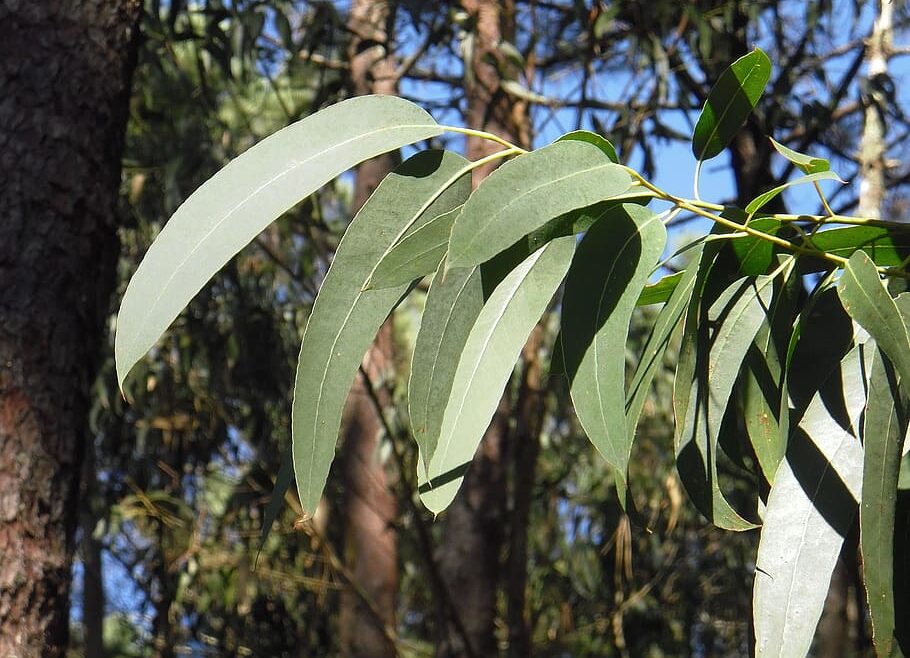Eucalyptus
The oil that comes from the eucalyptus tree is used as an antiseptic, a perfume, as an ingredient is cosmetics, as a flavoring, in dental preparations, and in industrial solvents. Eucalyptus is high in antioxidants, relieves cold symptoms, treats dry skin, may reduce pain, promotes relaxation, helps keep your teeth healthy. Recomended to use the fresh leaves to gargle for relieving sore throat, snustitis and bronchitis. Its oil vapor acts as a decongestant when inhaled, and it is also popular home remedy for colds and bronchitis.
Eucalypts vary in size from shrubs to tall trees. Trees usually have a single main stem or trunk but many eucalypts are mallees that are multistemmed from ground level and rarely taller than 10 metres. There is no clear distinction between a mallee and a shrub but in eucalypts, a shrub is a mature plant less than 1 m tall and growing in an extreme environment. Nearly all eucalyptus are evergreen, but some tropical species lose their leaves at the end of the dry season. As in other members of the myrtle family, eucalyptus leaves are covered with oil glands. The copious oils produced are an important feature. The leaves on a mature eucalyptus plant are commonly lanceolate, petiolate, apparently alternate and waxy or glossy green. In contrast, the leaves of seedlings are often opposite,sessile and glaucous. Four leaf phases are recognised in the development of a eucalyptus plant: the ‘seedling’, ‘juvenile’, ‘intermediate’, and ‘adult’ phases. The most readily recognisable characteristics of eucalyptus species are the distinctive flowers and fruit. Flowers have numerous fluffy stamens which may be white, cream, yellow, pink, or red. Thus, flowers have no petals, but instead decorate themselves with the many showy stamens. The woody fruits or capsules are roughly cone-shaped and have valves at the end which open to release the seeds, which are waxy, rod-shaped, about 1 mm in length, and yellow-brown in colour. Most species do not flower until adult foliage starts to appear.

